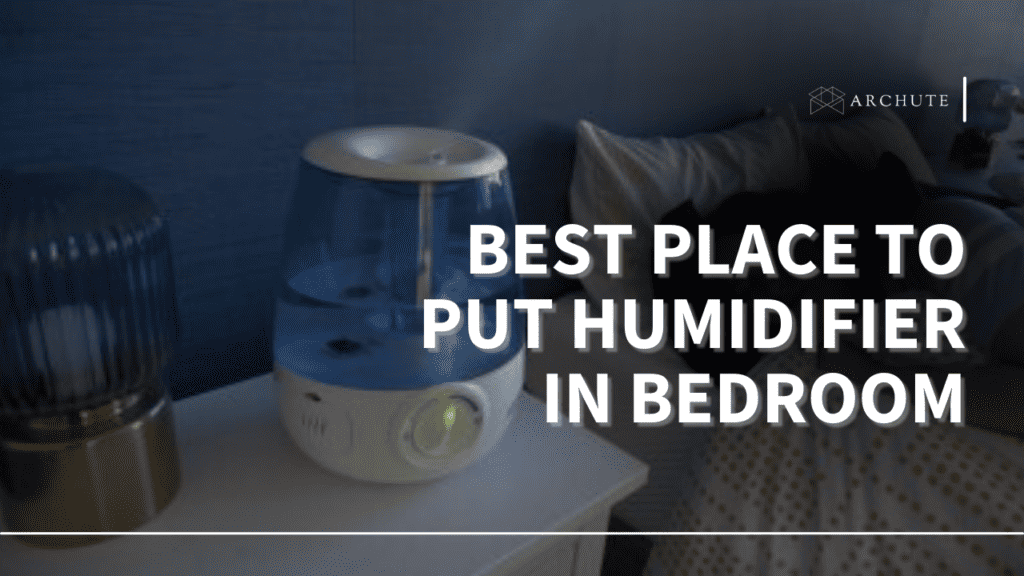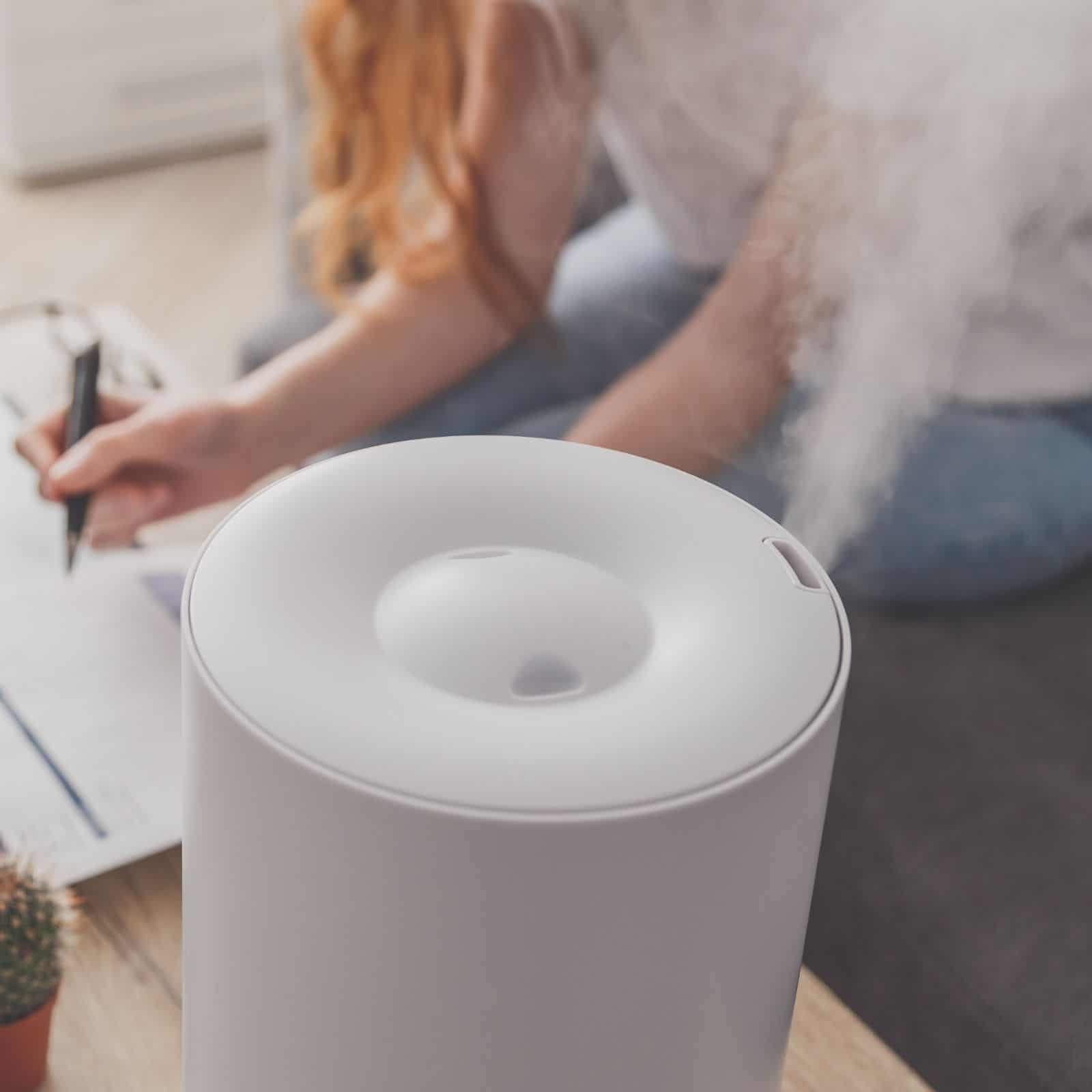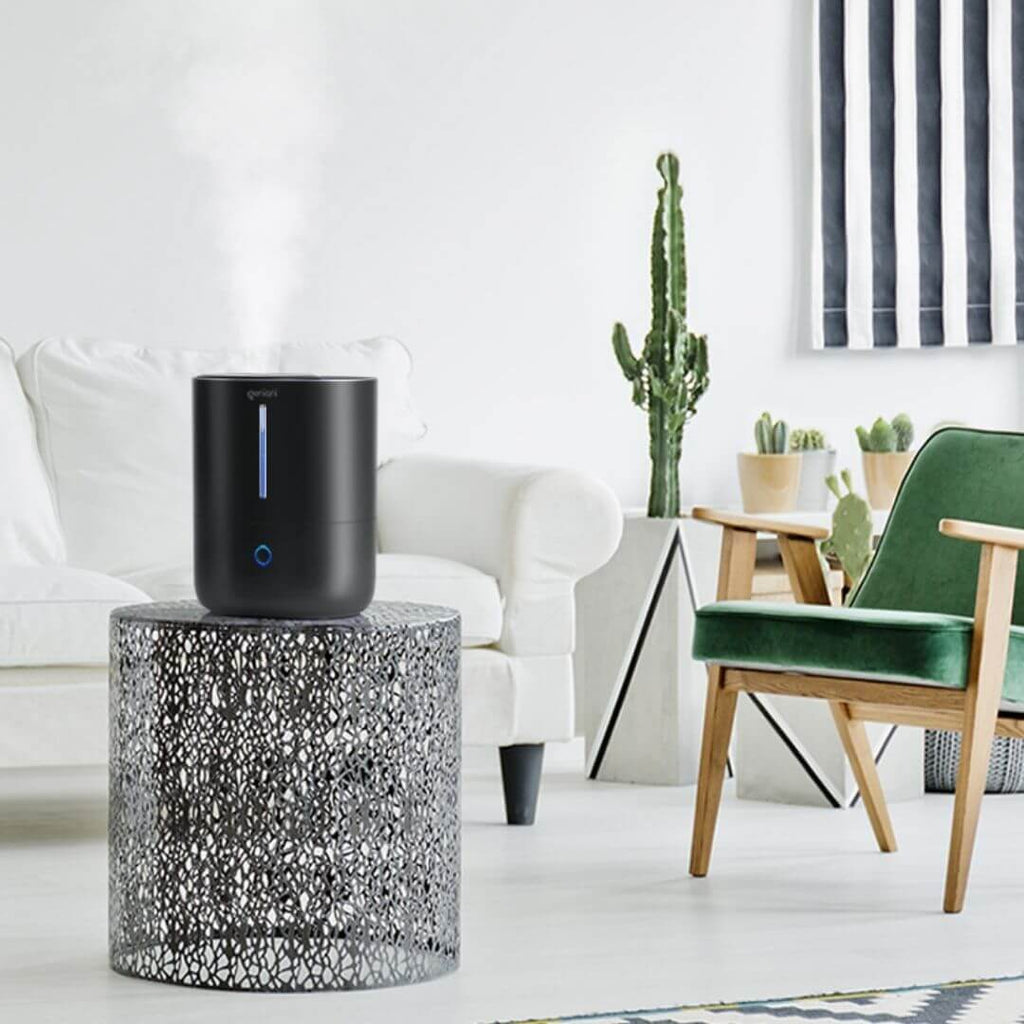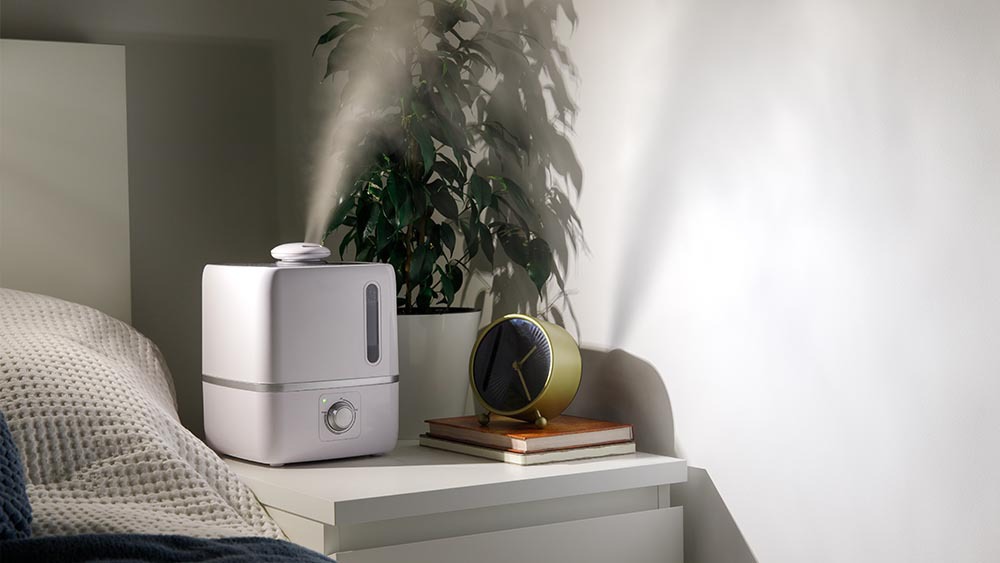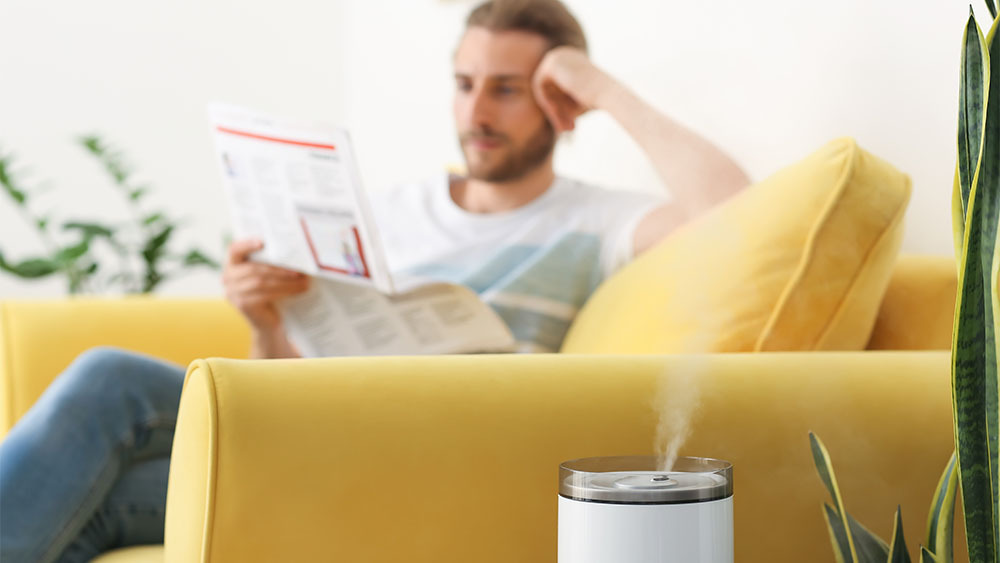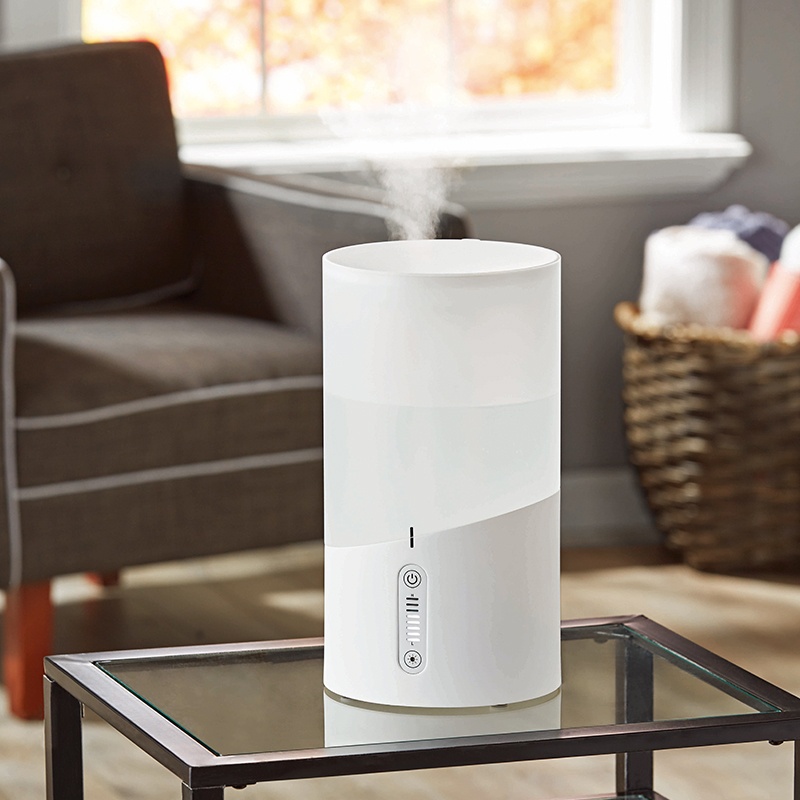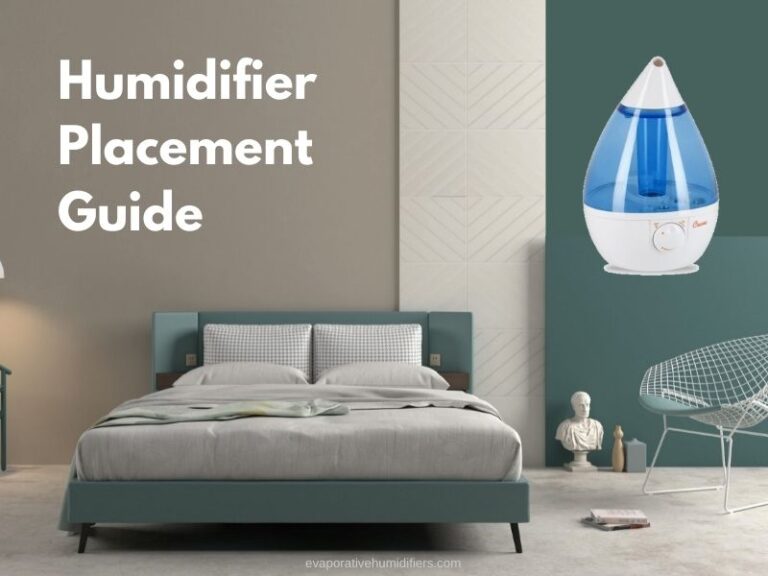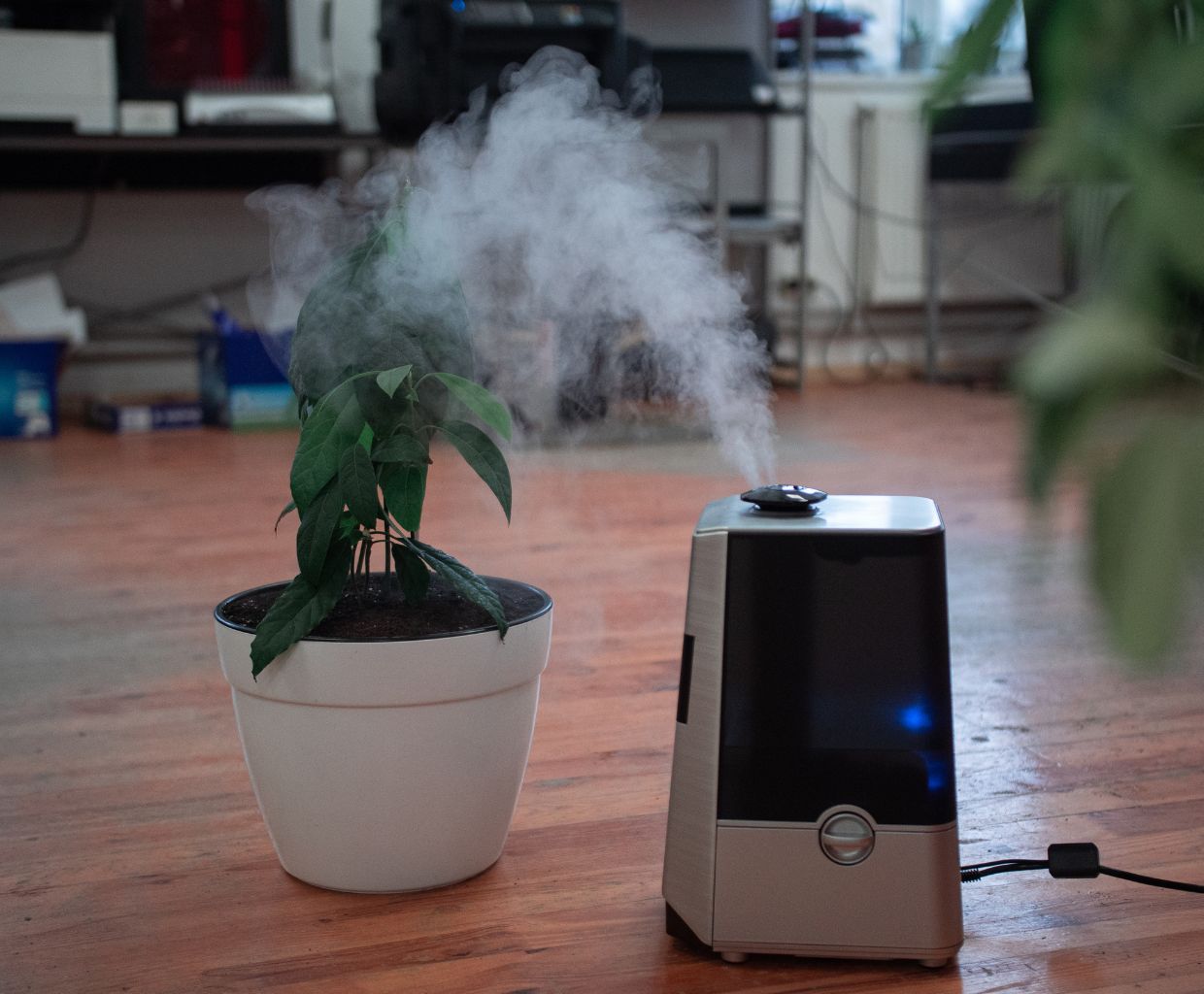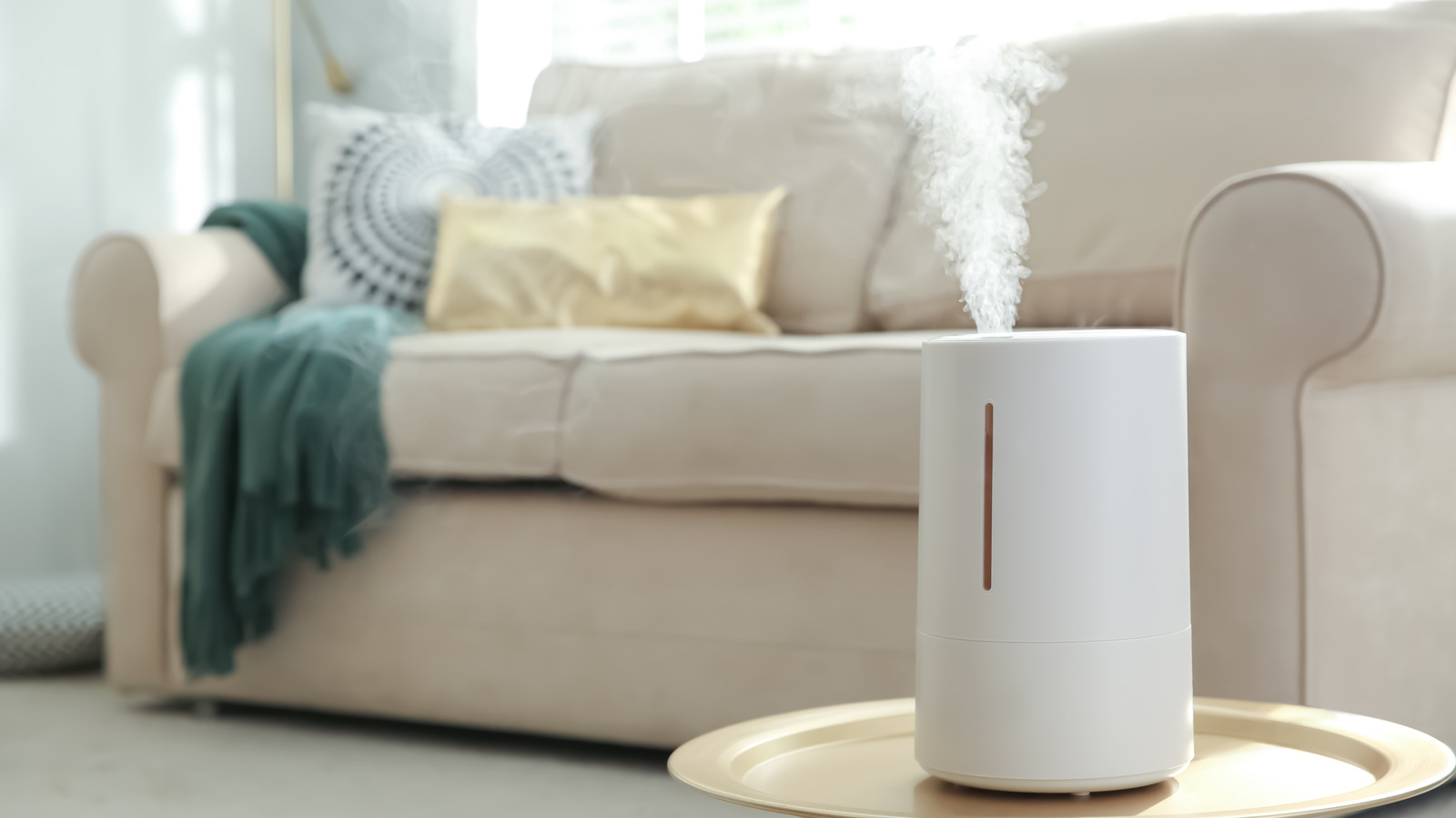Best Place To Place A Humidifier
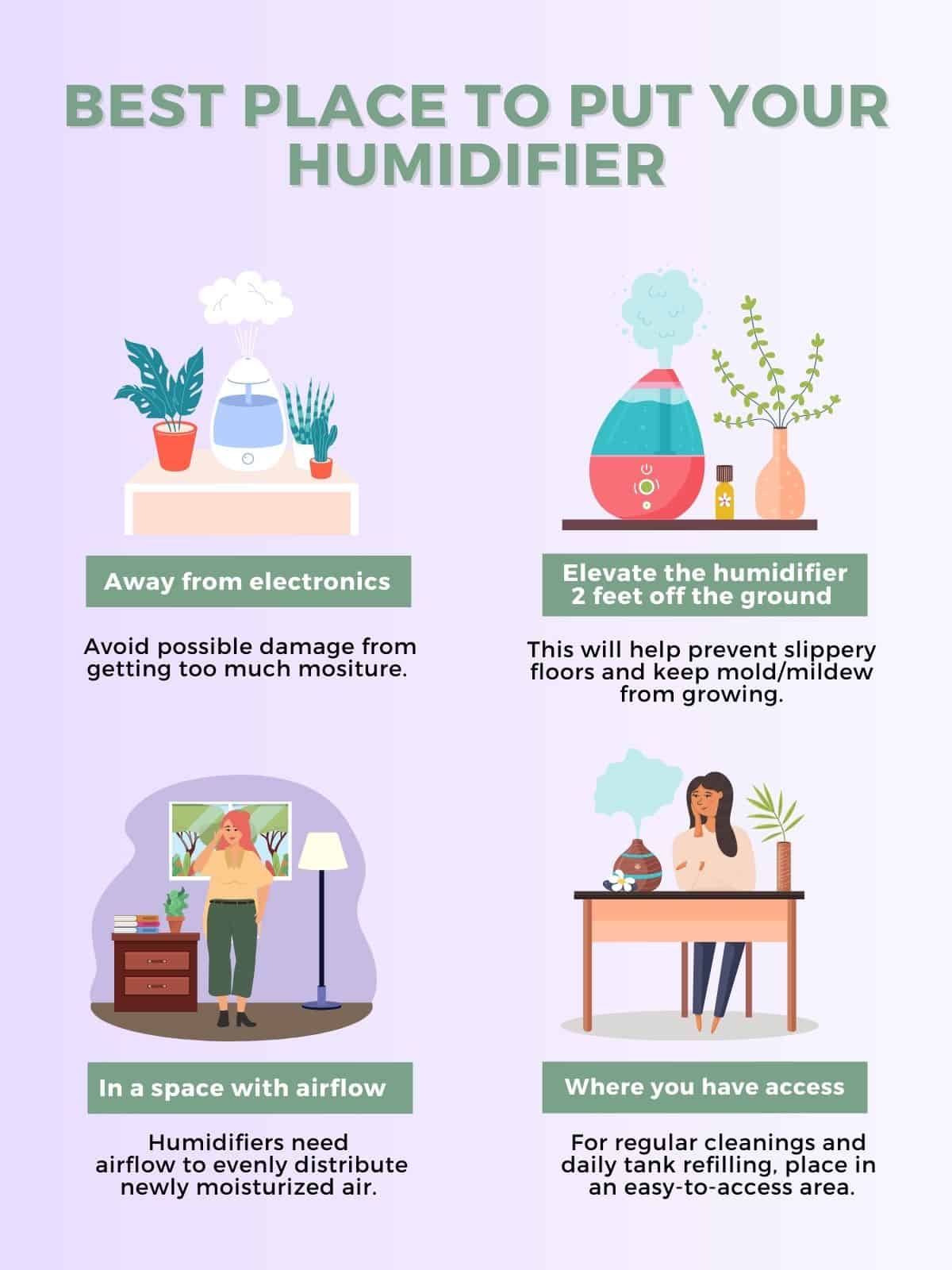
Imagine stepping into your home on a frosty winter evening. The air, dry and biting, makes your skin feel tight, and a scratchy throat is already starting to develop. But then, you walk into a specific room, and a gentle wave of moist air washes over you. It’s subtle, but undeniably comforting, easing the dryness and creating a sanctuary from the harshness outside.
Finding the best place to put a humidifier in your home can significantly improve your indoor air quality and overall well-being. Positioning it correctly is crucial for maximizing its benefits and avoiding potential drawbacks like mold growth and ineffective humidification.
Understanding Humidifiers and Their Purpose
Humidifiers add moisture to the air, combating the dryness that often accompanies colder months or arid climates. This moisture can alleviate symptoms like dry skin, chapped lips, and sinus congestion. They also help reduce static electricity and preserve wooden furniture.
There are various types of humidifiers, each with its own strengths. These include evaporative, ultrasonic, steam, and whole-house systems. The choice depends on your specific needs and the size of the area you want to humidify.
Why Placement Matters
Strategic placement is key to optimal humidifier performance. A poorly positioned humidifier can lead to uneven humidity levels, potential damage to surfaces, or even health concerns.
For instance, placing a humidifier directly on a wooden floor could cause warping or water damage. Similarly, if it’s too close to a wall, moisture can accumulate and lead to mold growth.
Ideal Locations for Your Humidifier
The bedroom is often considered a prime location for a humidifier. Sleep quality can improve significantly when the air is properly humidified.
Place the humidifier on a stable, elevated surface like a nightstand or dresser, away from furniture and walls. This allows the moisture to disperse evenly throughout the room.
The living room is another common choice, especially in open-concept homes. This is where families gather and spend a lot of time.
Again, elevation is important. Choose a central location that isn't directly near electronics or fabric-covered furniture.
Locations to Avoid
Bathrooms are generally not a good choice for humidifiers. They tend to already be humid, potentially leading to excessive moisture and mold.
Closets are another area to avoid. Poor ventilation combined with added moisture creates an ideal breeding ground for mold and mildew.
Finally, keep humidifiers away from direct sunlight. Sunlight can promote algae growth in the water tank, impacting air quality. Regular cleaning and maintenance are essential.
Tips for Optimizing Humidifier Performance
Regular cleaning is non-negotiable. Empty and clean the humidifier every few days to prevent the growth of bacteria and mold. According to the Environmental Protection Agency (EPA), maintaining proper cleaning practices is crucial for ensuring the health benefits of humidification.
Use distilled or demineralized water. Tap water contains minerals that can accumulate inside the humidifier and be released into the air as white dust.
Monitor humidity levels. Use a hygrometer to track the humidity in your home. The ideal range is between 30% and 50%. The Mayo Clinic suggests this range is optimal for comfort and health.
Consider the size of your room. Ensure the humidifier is appropriately sized for the area you're trying to humidify. Using a humidifier that's too small won't be effective, while one that's too large can lead to over-humidification.
Beyond Location: Additional Considerations
Some people prefer using essential oils in their humidifiers for added aromatherapy benefits. However, check your humidifier's manual first, as some models aren't designed for essential oils and can be damaged.
For homes with children or pets, safety is paramount. Choose a humidifier with safety features like automatic shut-off and consider placing it out of reach. A cool mist humidifier is always preferred over a warm mist humidifier if safety is your concern.
Consider a whole-house humidifier for a more comprehensive solution. These are typically integrated into your HVAC system and provide consistent humidity throughout your entire home.
The Long-Term Benefits
Investing time and effort in properly placing and maintaining your humidifier can provide long-term benefits. From improved respiratory health to preserved furniture, the rewards are well worth it.
A well-humidified home creates a more comfortable and healthier environment for everyone. It reduces the risk of infections, alleviates allergy symptoms, and promotes better sleep.
Creating Your Indoor Oasis
Ultimately, the best place for your humidifier is the location that effectively addresses your specific needs and living situation. Experiment, observe, and adjust as needed to find the sweet spot that brings balance and comfort to your indoor environment.
By taking the time to understand your humidifier, its purpose, and the factors that influence its performance, you can transform your home into a sanctuary of balanced humidity and well-being. It is more than an appliance; it's an investment in your health and home.


